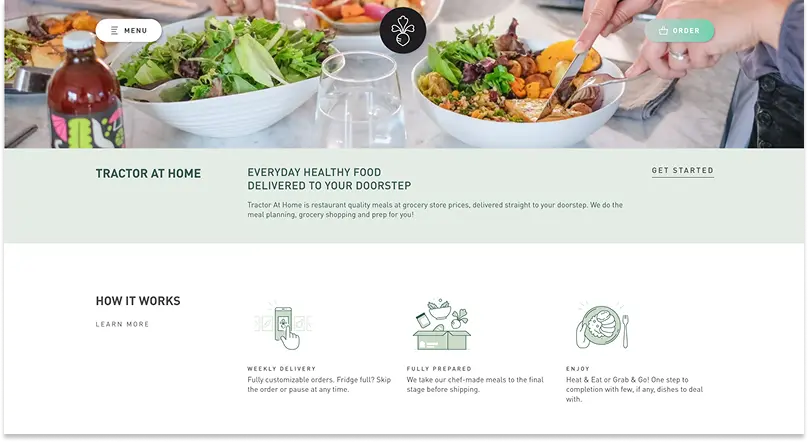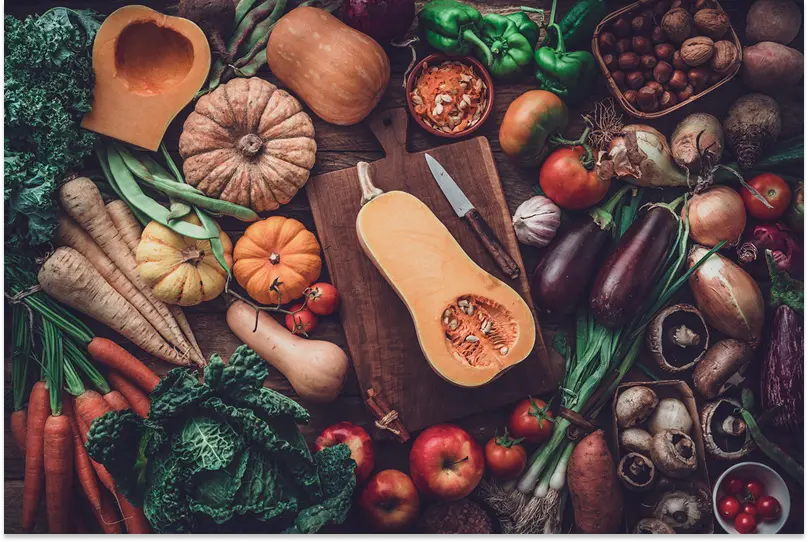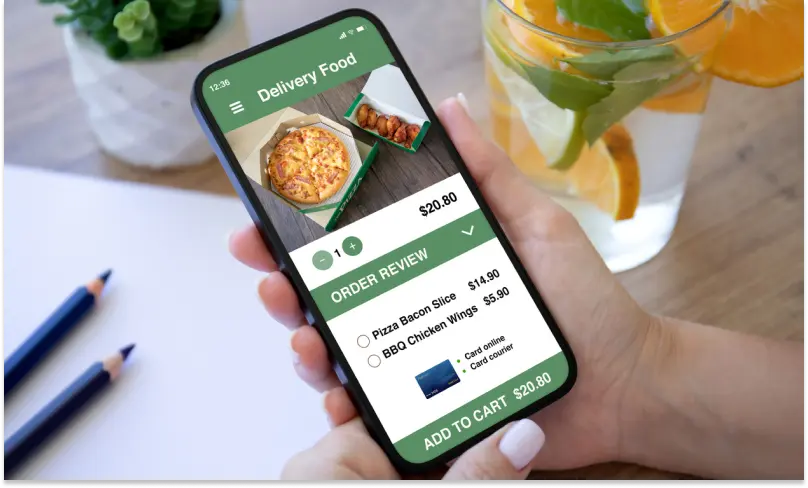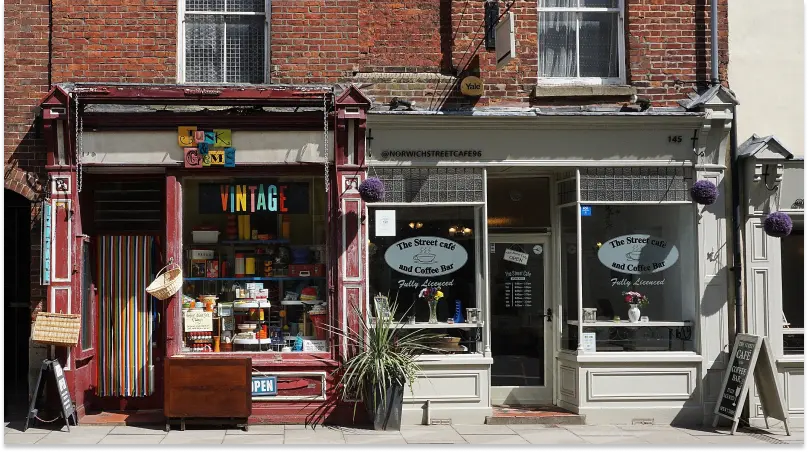13 Must-Know Hacks for Efficient Food Delivery Logistics

Skip the platform fees! Learn how local food businesses use smart logistics, scheduling, and route optimization to deliver profitably.

- Scheduled delivery beats on-demand for most local food businesses — it's more cost-effective and builds customer loyalty without platform fees.
- Smart inventory planning around seasonal demand helps farms, CSAs, and local food businesses maximize peak seasons while minimizing waste.
- Subscription and meal plan models create predictable revenue streams and enable more efficient route planning for consistent delivery logistics.
- Direct customer relationships through in-house delivery operations give you control over food quality, customer service, and the entire delivery experience.
- Route optimization software can dramatically reduce fuel costs and delivery times while improving customer satisfaction through reliable time windows.
- Local SEO and community focus help small food businesses compete against larger platforms by emphasizing personal service and local connections.
Getting food delivered is super convenient for customers. No wonder it’s on track to become a trillion-dollar industry by 2027.
But if you’re in the food delivery business, you know how much work happens behind the scenes to make that convenience happen. Last mile delivery logistics are complex, and efficiency can spell the difference between a poor customer experience and a rave review.
In this article you’ll find 14 tips and tricks for turning even the most daunting challenges in food delivery logistics into a piece of cake.
First let’s be clear about exactly who we’re talking about when we talk about food delivery logistics. This article will be useful to you if:
- You’re a restaurant, deli, bakery, caterer or similar business.
- You’re a farm, CSA, co-op, or local grocery store.
Before we look at specific tips, it’s important to understand the differences between scheduled and on-demand food delivery:
Two approaches to food delivery logistics: On-demand and scheduled
1. On-demand delivery
On-demand food delivery is low-effort takeout. Instead of going to pick up a meal, people get it delivered — usually by a third-party food delivery logistics provider like DoorDash, Grubhub or Uber Eats.
Customers typically expect to get their food order delivered within an hour at most, preferably in less than 30 minutes.
On-demand restaurant delivery is convenient but not cost-effective. Delivery fees make it expensive for the customer, and the restaurant loses up to 30% of each order to the delivery company.
2. Scheduled delivery

When customers have time to plan ahead, scheduled delivery offers a great combination of convenience and cost effectiveness.
Here’s how it works:
- Customers place their orders in advance. The lead time can be a few days, or a few hours.
- The restaurant plans a delivery route that serves multiple customers with one vehicle.
- Customers get their orders delivered within a specified time window.
Scheduled delivery allows food business owners to bring their delivery operations in-house and take advantage of the efficiencies that can be achieved using routing and delivery management software.
It’s also easier to meet and manage customer expectations when deliveries are handled in-house:
- You have control over how your food products are transported, including things like temperature control that affect food safety and quality.
- You can offer direct customer support instead of having a large third-party corporation acting as a middleman.
In Routific’s home town Vancouver, for example, popular local salad restaurant Tractor has branched out to include a “Tractor at home” subscription-based weekly food delivery option.
Ideas for encouraging scheduled delivery
If you’re a restaurant business with a lot of on-demand delivery business, there are opportunities to build demand for scheduled deliveries. Here are some ideas to try:
- When you’re packing an order to be picked up by a third-party delivery service, include a flyer offering a discount for orders placed 24 hours or more in advance.
- Use social media to encourage advance orders before big events – think Superbowl watch parties and graduation season.
- Offer a meal subscription service. More on this in the next section!
Let's get started!
14 hacks for taking your food delivery logistics to the next level
Efficient logistics starts in the back office: Menu and delivery planning
1. Offer subscription and scheduled delivery options
If you have regular customers, you have an opportunity to launch your own meal subscription service. Why let a third party app control the relationship with your customers and take all the profit?
For example, Bowlz offers healthy lunch bowls to customers in Zurich as a delivery service. Customers who order by 10:30 can choose a delivery window between 11am-12pm or 12pm-1pm, while those who order before the final 11:30am cutoff can get their meals delivered between 12pm-1pm.
To enable on-time delivery with these quick turnaround times, Bowlz uses Routific to schedule orders as they come in, and plan the most efficient routes for their team of bike couriers.
Overall, a preplanned delivery schedule is a great addition to a pre-set meal menu. Offering scheduled as well as (or instead of) on-demand delivery orders is good for both your customers and your business:
- Reliable delivery time windows allow your customers to plan their own schedules more easily.
- Scheduled deliveries usually means more deliveries per route. That in turn means lower costs.
- Use route optimization to plan the most efficient routes for maximum profitability.
2. Bundle food and beverages
Bundling is a great strategy to boost sales and enhance customer experience.
- Recommended beverage pairings encourage customers to expand their orders.
- Try combining popular dishes with complimentary beverages or side dishes at a discounted price to encourage larger orders.
This bundling method can effectively increase average order value, encourage repeat business, and increase overall sales.
3. Manage your inventory around seasonal demand

If you're a farm, CSA, bakery, or local food business, seasonal demand swings can make or break your delivery logistics. Smart inventory planning helps you capitalize on peak seasons while avoiding waste during slower periods. Here are some ideas for working with seasonal changes:
- Plan for predictable seasonal peaks. Most food businesses have obvious busy seasons — think pumpkin everything in fall, fresh berries in summer, or soup deliveries in winter. Use last year's sales data to forecast demand and adjust your delivery capacity accordingly.
- Embrace seasonal flexibility. Specials based on whatever is abundant and affordable help to keep costs down and avoid waste. They can also give customers something to look forward to.
- Communicate seasonal changes early. If you're a CSA or farm delivery service, give customers advance notice about what's coming into season. Weekly newsletters or social media posts help customers plan their meals around your deliveries.
- Consider subscription adjustments. Many local food businesses see natural fluctuations in subscription customers — more people want fresh salad deliveries in January, fewer want heavy stews in July. Build this into your delivery planning rather than trying to maintain constant volume year-round.
- Partner with complementary businesses during slow seasons. A farm might partner with a local bakery during winter months, or a juice company might add soup to their winter delivery routes.
Create a fantastic customer experience
4. Optimize your website
A great website makes it easy for customers to find and order from you. That means investing in a well-designed website that makes it easy for customers to:
- Browse menu options, including suggestions based on previous orders.
- Place and pay for online orders.
Restaurant-focused website builder tools like Owner make it a lot easier to build and maintain a professional, SEO optimized website that works well on both mobile and desktop. Owner even includes access to a online food delivery network offering special rates with DoorDash and Uber Eats.
5. Provide real-time notifications
Timely delivery notifications play a key role in customer satisfaction. By keeping customers informed about their food order status — from receiving their order through preparation and dispatch to the final delivery — you help create a smooth and enjoyable experience.
Modern delivery management systems like Routific include real-time tracking, so you can offer the same customer experience even if you’re managing deliveries in-house.
6. Choose the right ordering platform

Food delivery apps like DoorDash, Grubhub, and Uber Eats are popular because they make meal delivery super easy for customers. For a small restaurant business, having someone else take care of the whole delivery process is what makes it possible in the first place.
If you opt for a third-party mobile delivery app, choose one that’s already popular with your target market. Most people will prefer the app that’s ready on their phones.
There are downsides to using one of the big food delivery platforms:
- They can be expensive, with lots of hidden fees.
- Customer loyalty goes to the platform, not the supplier.
- You have no control over the delivery experience.
The other alternative is to manage your deliveries in-house. With modern delivery software like Routific, this is a lot easier than it used to be. And the mobile app for drivers comes free as part of the package, so you still have many of the advantages of mobility.
7. Pay close attention to food packaging
A significant part of a good food delivery experience is the condition of the food when it arrives. Good packaging keeps perishable food fresh, hot (or cold), and intact.
Additionally, investing in high-quality, eco-friendly packaging not only helps maintain food quality but also speaks of your commitment to environmental sustainability.
Streamline your logistics operations
8. Offer curbside collection
Takeout or curbside collection captures a crucial segment of the market that, for various reasons, prefers to pick up their orders rather than have them delivered.
Adding a pick-up option has several advantages:
- Restaurants and food delivery services can increase order volume and turn orders around faster.
- Customers can simply drive up and collect their food, rather than relying on delivery timings.
- It eliminates the cost of using a third-party service or delivery driver.
- It creates an opportunity to serve customers who are just passing through the area.
9. Choose easy-to-use delivery software
The efficiency and simplicity of your delivery software can make a huge difference in your logistics operations.
For planners and dispatchers, your delivery system should help easily schedule deliveries, plan routes, communicate with drivers and keep customers updated with real-time notifications. An added bonus is metrics that help you track driver shifts and cost per delivery.
For drivers, a delivery system should include a mobile app that makes it easy to view order details, navigate to delivery locations, and update delivery status. A user-friendly interface will avoid confusion, reduce the chances of errors, and improve the overall delivery time, thus enhancing your service effectiveness and customer satisfaction.
10. Get your route planning right
Food delivery efficiency largely depends on good route planning. Poor or inefficient route planning can result in unnecessary fuel consumption, vehicle wear and tear, delayed deliveries, and dissatisfied customers.
Delivery software like Routific uses the power of modern mapping technologies, route optimization algorithms, and real-time traffic data to streamline route planning.
11. Collect driver feedback
Listening to drivers is an underrated way to streamline operations. Drivers can provide valuable first-hand insights into route problems, vehicle issues, customer behaviors, and other operational challenges. Regular, structured feedback allows you to address small issues before they become larger problems.
You may need to set up a few new tools or platforms, like a virtual PBX, to collect the information you're looking for from your drivers. This can ensure your drivers are easily contactable and can provide real-time feedback as soon as they encounter any issues while working.
Market and grow your business

12. Improve your local SEO
A strong local SEO strategy can attract more customers in your geographical region. By optimizing your website and online listings with key location-based keywords, positive reviews, and local business citations, you can increase visibility for people searching for food delivery services in your area.
Strong local SEO directly contributes to higher sales and profits, making this an invaluable tool for smaller businesses striving to compete on an equal footing with larger companies.
13. Build customer loyalty
Building direct customer relationships is one of the biggest advantages of managing your own delivery operations. When customers order through third-party platforms, their loyalty goes to DoorDash or Uber Eats — not to your business.
Here are some ways to build a loyal local customer base:
- Give incentives for direct ordering. Offer discounts or loyalty rewards for customers who order directly through your website or phone rather than through delivery apps. Even a 10% discount for direct orders can be profitable when you're not paying platform fees.
- Create a subscription mindset. Regular customers are your most valuable asset. Consider offering weekly meal plans, standing orders, or subscription boxes that encourage customers to commit to your business long-term.
- Use delivery as a relationship builder. When you control the delivery experience, every interaction is an opportunity to strengthen customer relationships. Include handwritten notes, samples of new products, or seasonal recipes in delivery bags.
- Stay connected between orders. Use email newsletters, social media, or SMS to keep customers engaged. If you’re using restaurant management software like Owner, in-app messaging is an option too. Share behind-the-scenes content about your sourcing, seasonal updates, or cooking tips that remind customers why they chose a local business over a faceless platform.
- Make customer service personal. When problems arise, customers can call you directly instead of navigating through a corporate customer service maze. This personal touch often turns delivery issues into loyalty-building opportunities.
Common challenges in food delivery logistics
Efficient order management
Efficient food delivery starts with efficient order management. Mishandled or misplaced orders cause customer dissatisfaction and loss of business.
Look for an order management system that’s built with the needs of restaurant owners and food service businesses in mind. For customers who prefer to place their orders over the phone, you can add a toll free business number.
Convenient payment options
Cash has been the traditional payment method for many years, but the COVID-19 pandemic wiped out cash payments along with a lot of in-person transactions. Today consumers expect digital payment options including credit/debit card payments, mobile money, and proprietary online wallets. When you’re looking for an ordering system, payment options are an important thing to consider.
Competition from larger companies
In the food delivery market, competition from giant national or multinational companies can be a daunting challenge for smaller startups trying to build their own market share. These larger companies usually have a better financial base, broader geographical coverage, and more robust technical resources, giving them an edge in the market.
To carve out your own space, lean into the local advantage. Smaller, local businesses can offer customer service and personal connections that larger companies often lack. Additionally, specialized or unique offers can help you acquire a niche market that may be overlooked by larger competitors.
Frequently Asked Questions
What are some tips for optimizing my delivery routes and schedules with logistics software?
Every business is different, but a few tips that you should consider are:
- Confirm the route optimization platform you’re using accounts for general factors like traffic patterns and delivery windows, as well as use-cases specific to your business like on-demand deliveries or routing multiple drivers to a single location for a service call.
- Route optimization doesn’t just happen at the beginning of the route. Monitor real-time data and adjust routes dynamically throughout the day to account for issues your drivers face while en route.
- Implement geofencing and location tracking.
- Do you know if certain parts of the city always have traffic or if it takes longer to deliver to certain buildings? Use historical data to adjust your routes as you learn about your customers, city, drivers, and routes.
- Maintain accurate maps and address databases. This one might seem simple, but it’s the bedrock of good quality routes.
- Communicate with drivers using mobile apps. Stay in touch with your drivers so you know if you need to adjust routes or contact your customers to proactively fix issues.
- Continuously analyze and refine routes based on metrics.
What is logistics software?
Logistics software refers to specialized applications designed to streamline and optimize the various processes involved in the management and execution of supply chain operations. These include route planning, inventory management, real-time tracking, and data analytics.
Are delivery businesses profitable?
Yes! As the demand for local delivery services rises, so does the potential profit. This is reflected in wages and salaries. In the United States, the average salary for people working in delivery services is $96,039 per year. Home delivery drivers earn over $95,000 on average, and senior delivery managers earn over $110,000.
Of course there are no guarantees. As with any new business, the key to profitability is to identify the needs of your target market, then develop a viable business plan to meet those needs. Keeping your cost per delivery as low as possible will be crucial. But with the right combination of services, technology, and marketing strategies, your delivery business can capitalize on current market trends and maximize profitability.
Related articles
Liked this article? See below for more recommended reading!

How To Start A Food Delivery Service: 8 Steps To Success

Top Food Delivery Trends And Statistics For 2025


